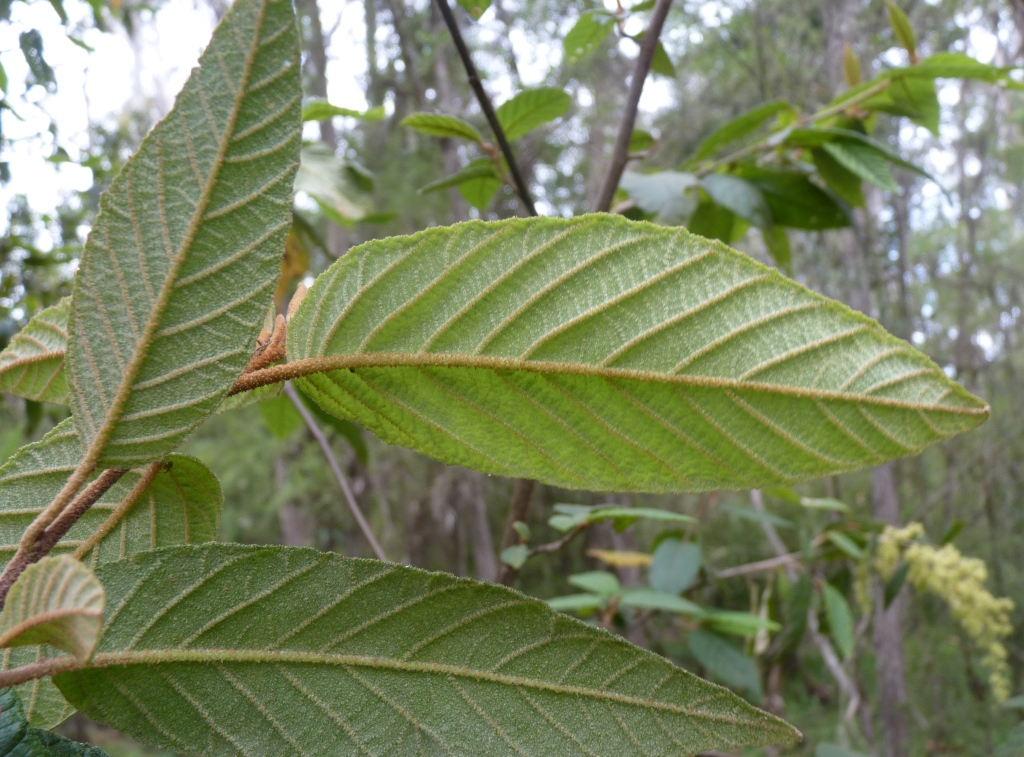Pomaderris aspera
Sieber ex DC. Hazel PomaderrisShrub or tree 2–15 m high; branchlets rusty stellate-pubescent. Leaves ovate, 40–120 mm long, 20–60 mm wide, acute to obtuse, margins minutely serrate, upper surface glabrous or sparsely stellate-pubescent, lower surface with rusty, stalked, stellate hairs, not entirely obscuring lamina, secondary (and usually tertiary) veins apparent; stipules 3–7 mm long, deciduous. Inflorescence paniculate, (5–)8–25(–35) cm long. Flowers cream, rarely tinged crimson, externally stellate-pubescent; pedicels 1–3.5 mm long; hypanthium 0.5–1 mm long; sepals 1.5–2 mm long, persistent; petals absent; disc absent; ovary inferior to semi-inferior, summit glabrous or pubescent, style branched from near base to midway. Operculum membranous, c. half to nearly as long as mericarp, or indistinct Flowers Oct.–Nov.
Wim, GleP, Brid, VVP, VRiv, GipP, OtP, WaP, Gold, CVU, GGr, DunT, NIS, EGL, EGU, WPro, HSF, HNF, OtR, Strz, MonT, HFE, VAlp. Also ?SA, Qld, NSW, Tas. Naturalized New Zealand. Common in wet and shaded forests from near sea-level to the subalps.
A variable species. In lowland East Gippsland and Omeo area plants commonly have broader, less wrinkled leaves with scattered stellate hairs above, and the ovary summit is often glabrous. Some plants from near Portland appear almost intermediate between P. aspera and P. apetala.
Walsh, N.G. (1999). Pomaderris. In: Walsh, N.G.; Entwisle, T.J., Flora of Victoria Vol. 4, Cornaceae to Asteraceae, pp. 85–109. Inkata Press, Melbourne.
 Spinning
Spinning



